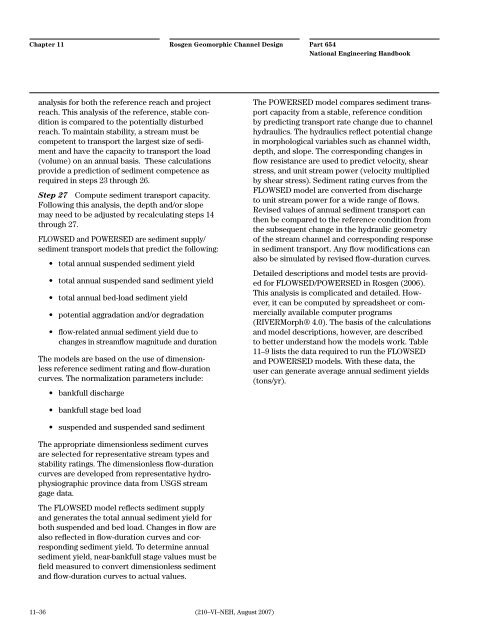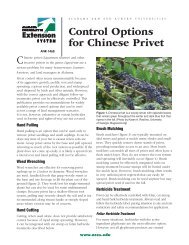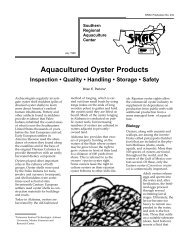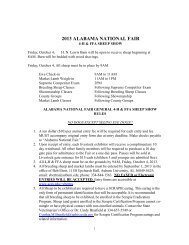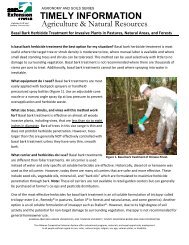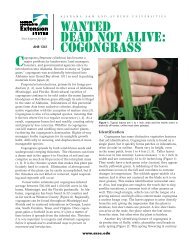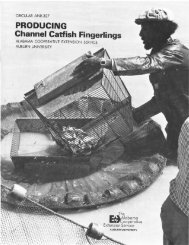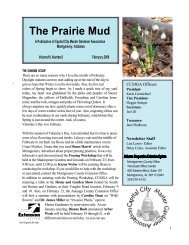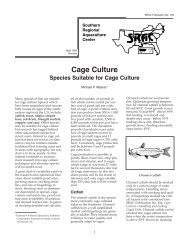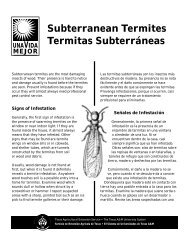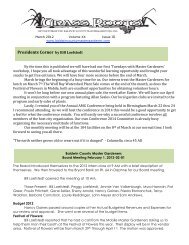Chapter 11--Rosgen Geomorphic Channel Design
Chapter 11--Rosgen Geomorphic Channel Design
Chapter 11--Rosgen Geomorphic Channel Design
Create successful ePaper yourself
Turn your PDF publications into a flip-book with our unique Google optimized e-Paper software.
<strong>Chapter</strong> <strong>11</strong><br />
analysis for both the reference reach and project<br />
reach. This analysis of the reference, stable condition<br />
is compared to the potentially disturbed<br />
reach. To maintain stability, a stream must be<br />
competent to transport the largest size of sediment<br />
and have the capacity to transport the load<br />
(volume) on an annual basis. These calculations<br />
provide a prediction of sediment competence as<br />
required in steps 23 through 26.<br />
Step 27 Compute sediment transport capacity.<br />
Following this analysis, the depth and/or slope<br />
may need to be adjusted by recalculating steps 14<br />
through 27.<br />
FLOWSED and POWERSED are sediment supply/<br />
sediment transport models that predict the following:<br />
• total annual suspended sediment yield<br />
• total annual suspended sand sediment yield<br />
• total annual bed-load sediment yield<br />
• potential aggradation and/or degradation<br />
• flow-related annual sediment yield due to<br />
changes in streamflow magnitude and duration<br />
The models are based on the use of dimensionless<br />
reference sediment rating and flow-duration<br />
curves. The normalization parameters include:<br />
• bankfull discharge<br />
• bankfull stage bed load<br />
• suspended and suspended sand sediment<br />
The appropriate dimensionless sediment curves<br />
are selected for representative stream types and<br />
stability ratings. The dimensionless flow-duration<br />
curves are developed from representative hydrophysiographic<br />
province data from USGS stream<br />
gage data.<br />
The FLOWSED model reflects sediment supply<br />
and generates the total annual sediment yield for<br />
both suspended and bed load. Changes in flow are<br />
also reflected in flow-duration curves and corresponding<br />
sediment yield. To determine annual<br />
sediment yield, near-bankfull stage values must be<br />
field measured to convert dimensionless sediment<br />
and flow-duration curves to actual values.<br />
<strong>Rosgen</strong> <strong>Geomorphic</strong> <strong>Channel</strong> <strong>Design</strong><br />
<strong>11</strong>–36 (210–VI–NEH, August 2007)<br />
Part 654<br />
National Engineering Handbook<br />
The POWERSED model compares sediment transport<br />
capacity from a stable, reference condition<br />
by predicting transport rate change due to channel<br />
hydraulics. The hydraulics reflect potential change<br />
in morphological variables such as channel width,<br />
depth, and slope. The corresponding changes in<br />
flow resistance are used to predict velocity, shear<br />
stress, and unit stream power (velocity multiplied<br />
by shear stress). Sediment rating curves from the<br />
FLOWSED model are converted from discharge<br />
to unit stream power for a wide range of flows.<br />
Revised values of annual sediment transport can<br />
then be compared to the reference condition from<br />
the subsequent change in the hydraulic geometry<br />
of the stream channel and corresponding response<br />
in sediment transport. Any flow modifications can<br />
also be simulated by revised flow-duration curves.<br />
Detailed descriptions and model tests are provided<br />
for FLOWSED/POWERSED in <strong>Rosgen</strong> (2006).<br />
This analysis is complicated and detailed. However,<br />
it can be computed by spreadsheet or commercially<br />
available computer programs<br />
(RIVERMorph® 4.0). The basis of the calculations<br />
and model descriptions, however, are described<br />
to better understand how the models work. Table<br />
<strong>11</strong>–9 lists the data required to run the FLOWSED<br />
and POWERSED models. With these data, the<br />
user can generate average annual sediment yields<br />
(tons/yr).


